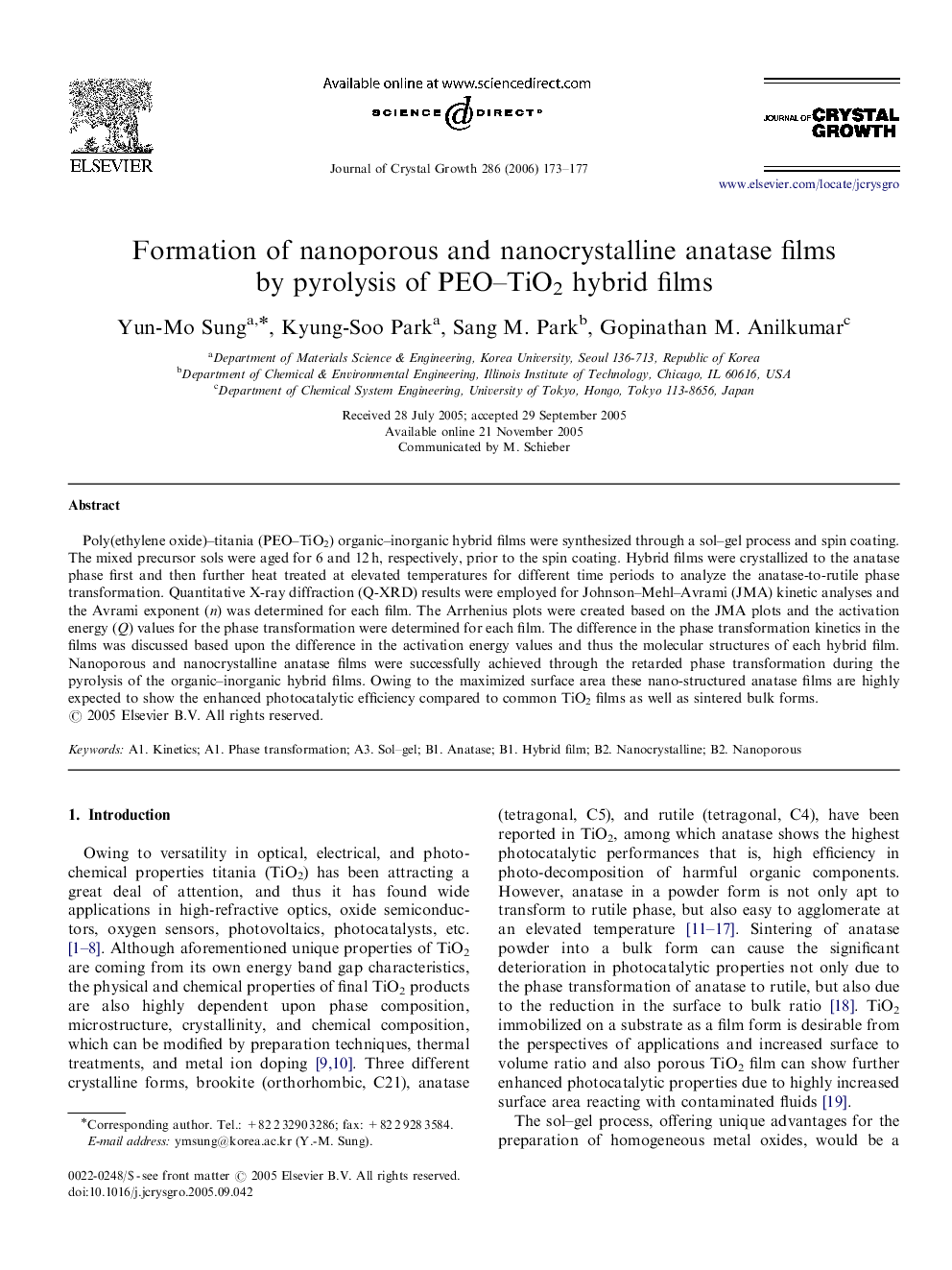| Article ID | Journal | Published Year | Pages | File Type |
|---|---|---|---|---|
| 1797238 | Journal of Crystal Growth | 2006 | 5 Pages |
Poly(ethylene oxide)–titania (PEO–TiO2) organic–inorganic hybrid films were synthesized through a sol–gel process and spin coating. The mixed precursor sols were aged for 6 and 12 h, respectively, prior to the spin coating. Hybrid films were crystallized to the anatase phase first and then further heat treated at elevated temperatures for different time periods to analyze the anatase-to-rutile phase transformation. Quantitative X-ray diffraction (Q-XRD) results were employed for Johnson–Mehl–Avrami (JMA) kinetic analyses and the Avrami exponent (n) was determined for each film. The Arrhenius plots were created based on the JMA plots and the activation energy (Q) values for the phase transformation were determined for each film. The difference in the phase transformation kinetics in the films was discussed based upon the difference in the activation energy values and thus the molecular structures of each hybrid film. Nanoporous and nanocrystalline anatase films were successfully achieved through the retarded phase transformation during the pyrolysis of the organic–inorganic hybrid films. Owing to the maximized surface area these nano-structured anatase films are highly expected to show the enhanced photocatalytic efficiency compared to common TiO2 films as well as sintered bulk forms.
